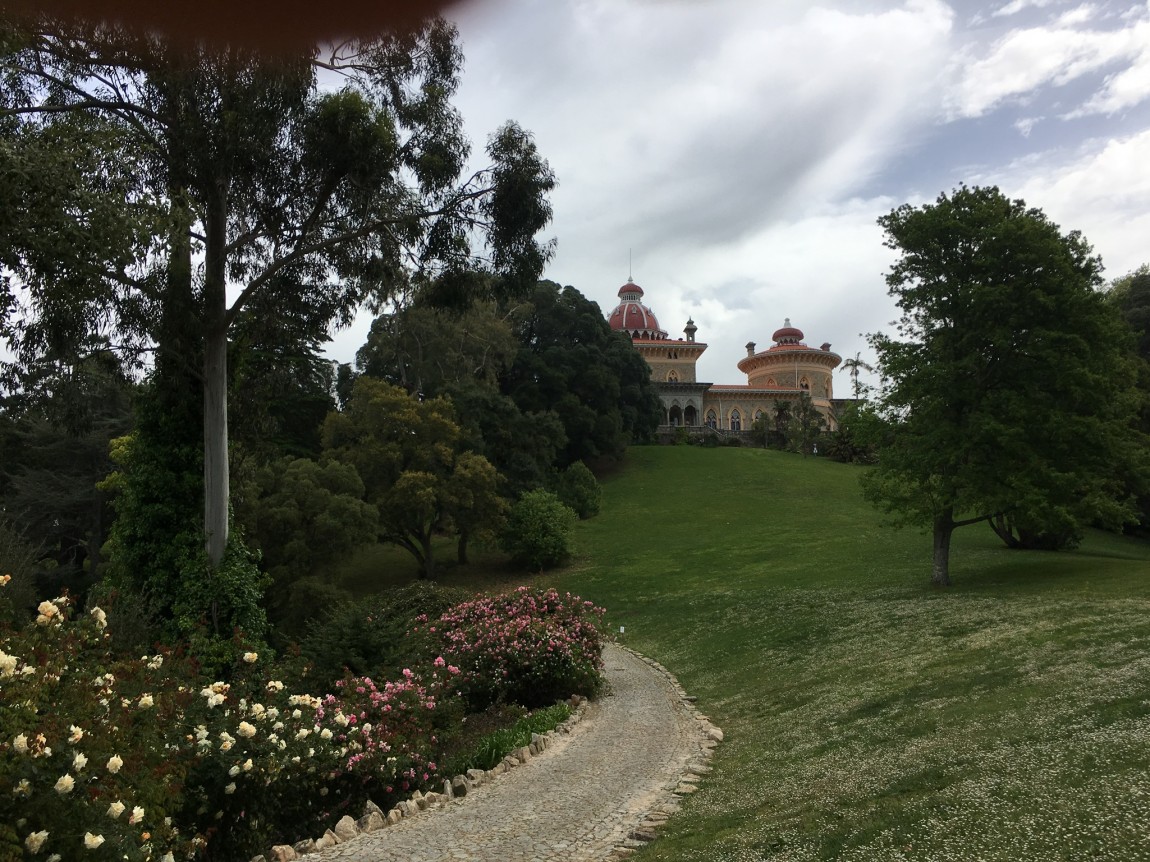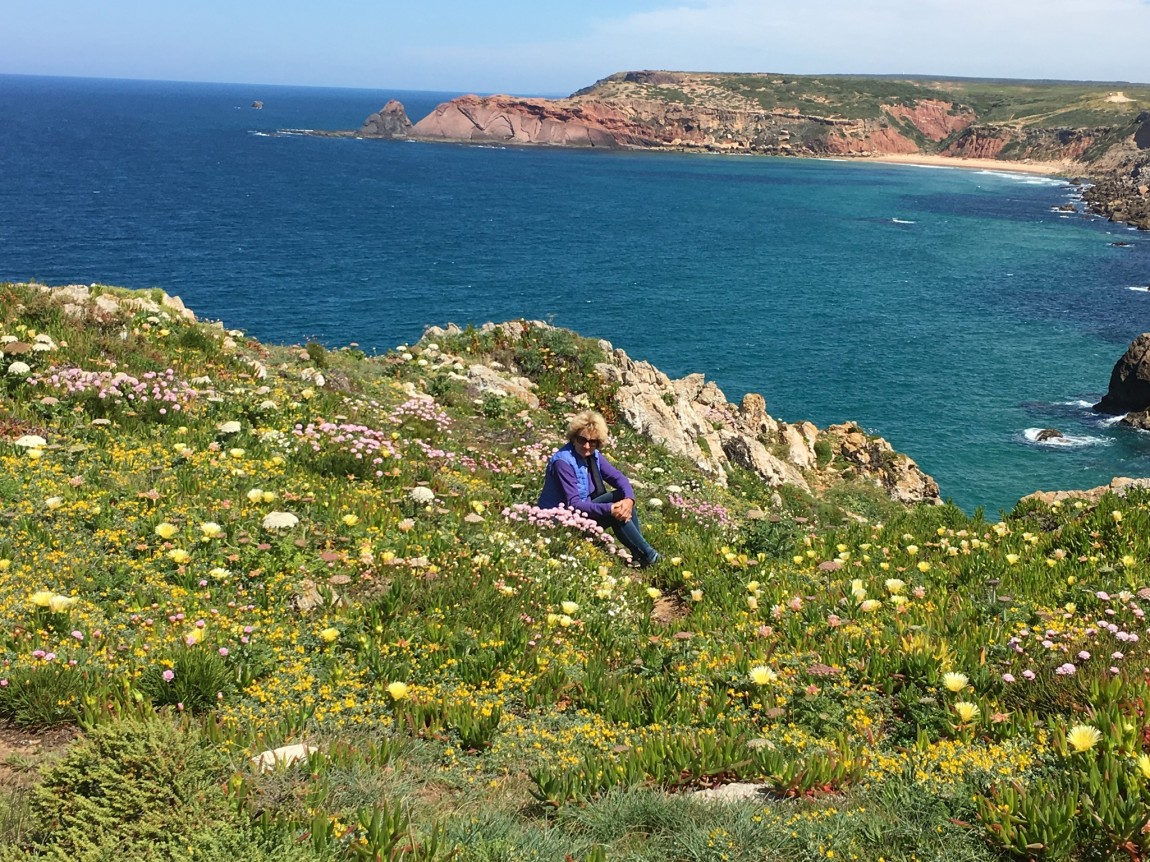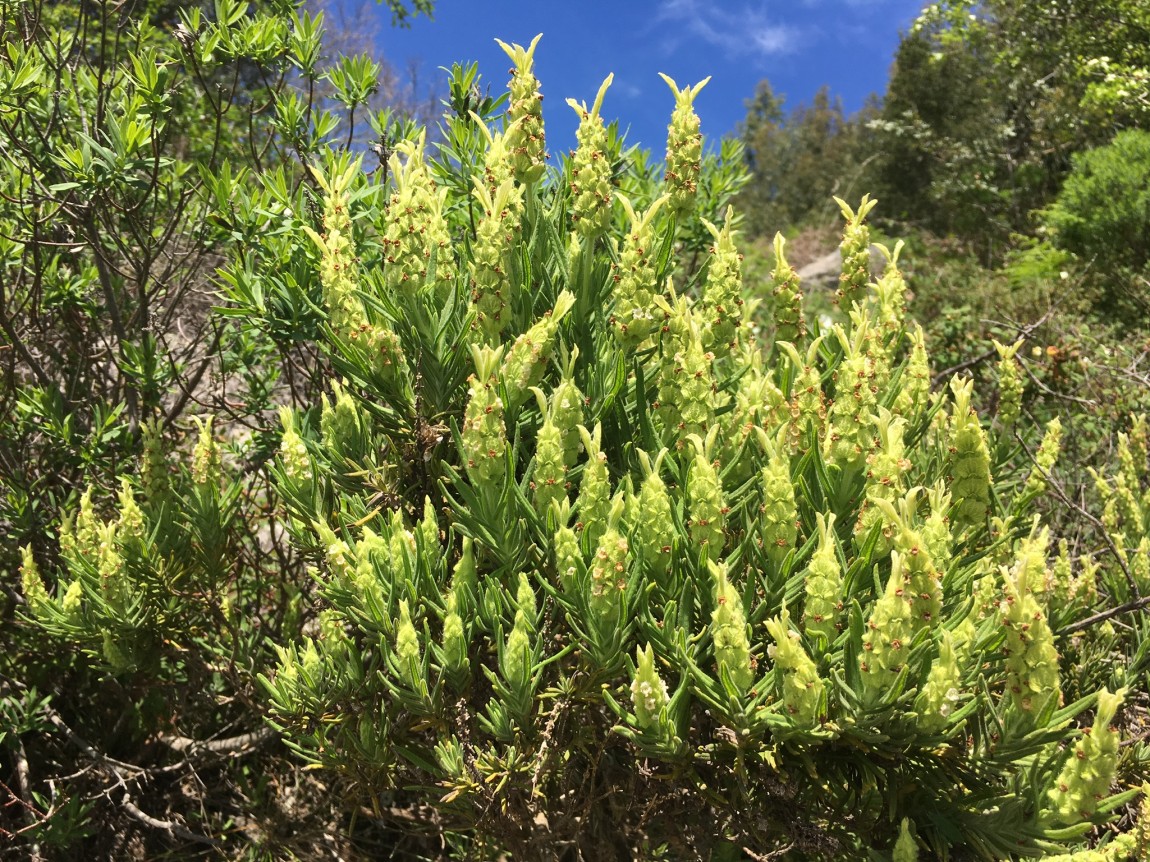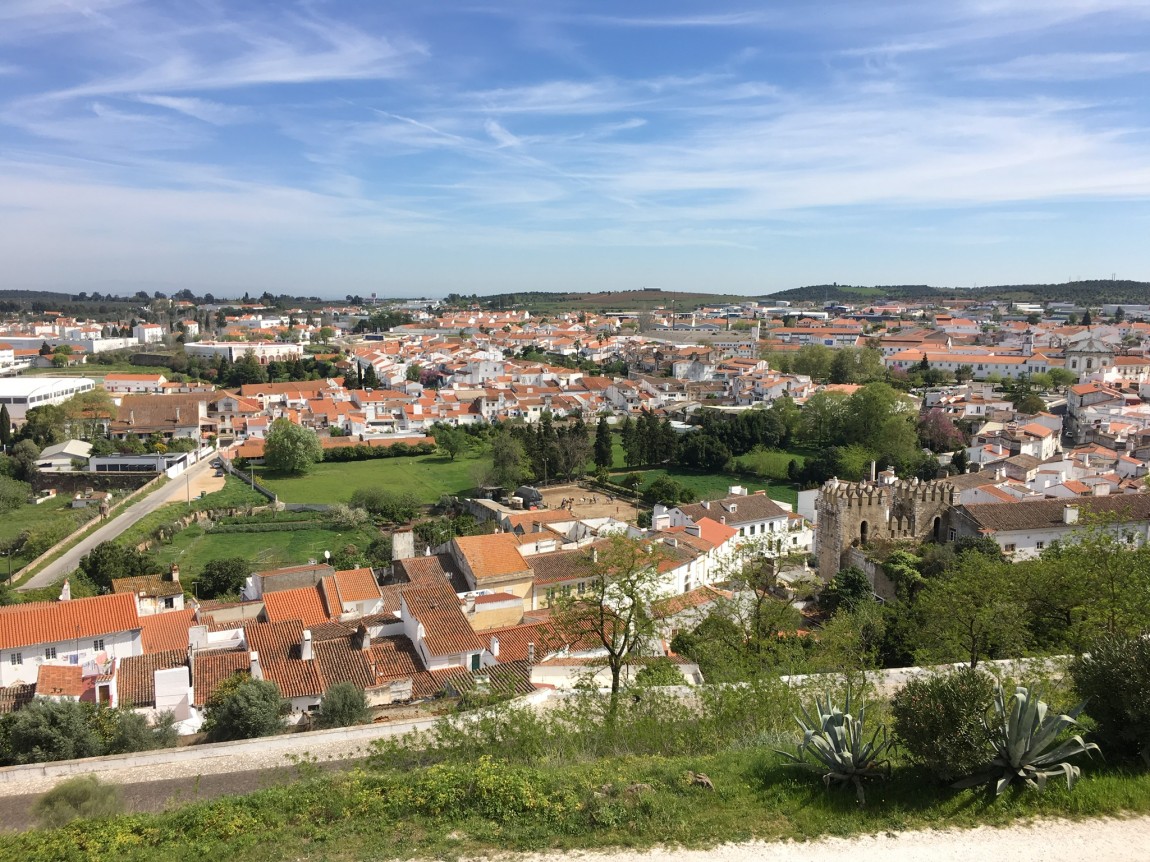Whilst in the magical town of Sintra we visited three Palace gardens – all had quite different styles. I’ve chosen to write about Monserrate as it had some wonderful plant collections as well as having a very beautiful palace.
Lots of information can be found on the internet regarding the palace and its various owners so I won’t go into detail here but would like to point out the important placement of two New Zealand native trees – the Pohutakawa and Rimu.
The nearest tree to the Palace is an enormous Pohutakawa – too wide to get into a photograph – all I can glean from books is that it must have been planted between 1863 and 1875 when plants were brought in from NZ and Australia.
The enormous Rimu is given centre stage in the middle of the only large lawn area in the garden. (Pohutakawa top left, Rimu mid-right in the photo above)
Throughout the garden there are also many giant tree ferns from Australia and New Zealand and these look magnificent from the various viewpoints. The terraced gardens containing Mediterranean shrubs and many of the old rose beds are being replanted this spring – it is great to see that this magnificent garden is still being renovated and improved.
For more pictures of the Palace and wonderful garden see the Green Door Face Book page – click on the link in the far right green column.









